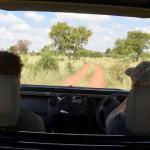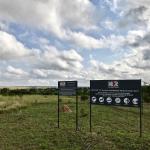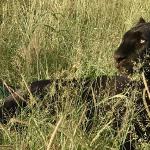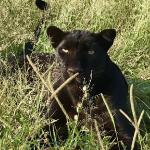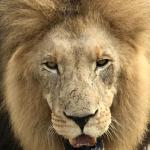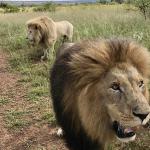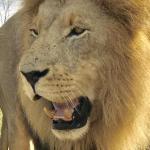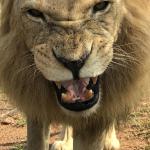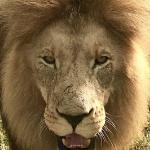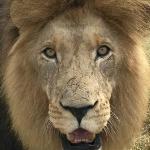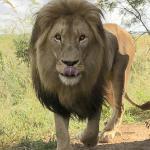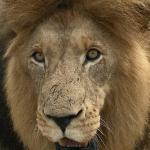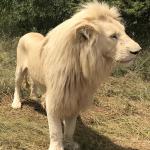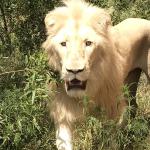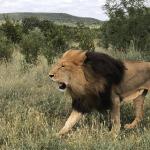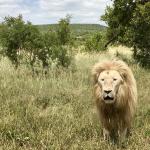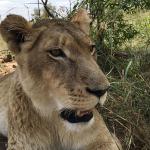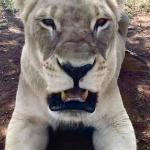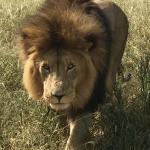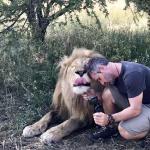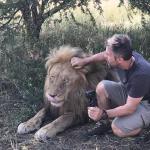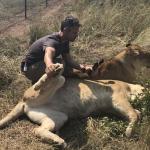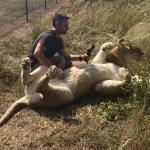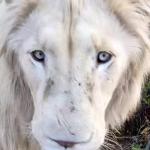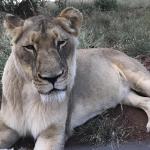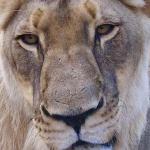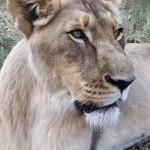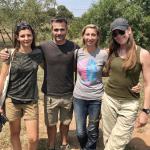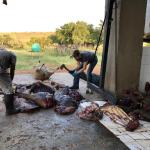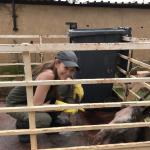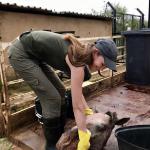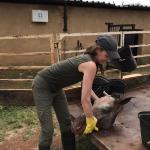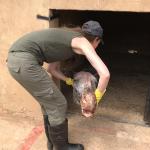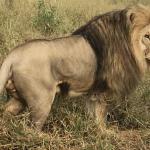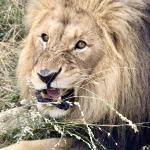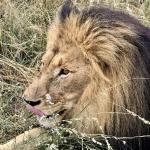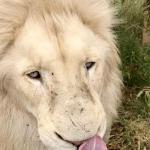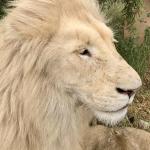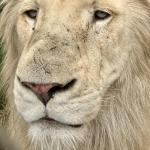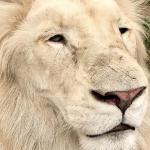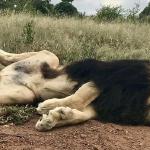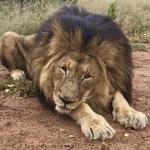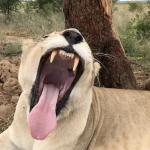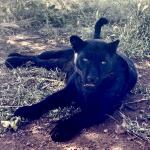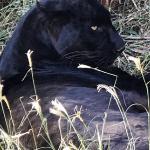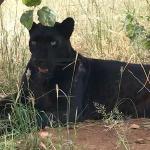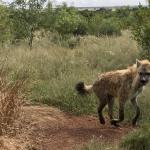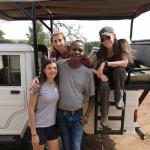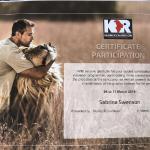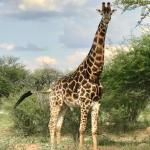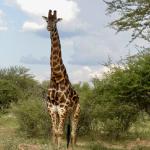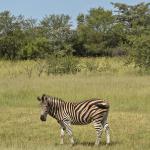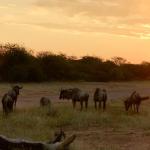© 2011 Sabrina Swenson. All Rights Reserved.
Lion Whisperer
March, 2019
I had heard of the Lion Whisperer, but since I've not owned a TV since the 90s and having never looked him up, all I knew was that he was a South African that had a way with lions. A colleague often posted pictures of him and his big cats on her Facebook page. As a cat lover, I always enjoyed looking at them. One day she posted a video. On it, the Lion Whisperer (aka Kevin Richardson) talked about the volunteers at his wildlife sanctuary. Volunteers? He has volunteers? That was it! That was what I was going to do!
One of my goals is to eventually travel every country in the world. I am in no rush. I’ve been plodding along at it for the past 24 years and have crossed 99 countries off my list. There's no defined finish date, other than by-the-time-I-die, I would like to have traveled all 197 countries. As such, I generally never return to the same country twice. South Africa, however, is always my exception. My first trip to the country was two weeks after 9/11. A girlfriend and I were planning our trip when the tragedy occurred. We said “screw it, let’s go anyway!” and so we did. What ensued was one of the best vacations of my life. Everything about it was great, especially going on safari in Kruger Park. Being an animal lover, it was the highlight for me. Staying in a beautiful bush camp added to the experience. And so, I’ve found myself on many occasions since then, returning to this great country. Sure, she has her problems, but what country doesn’t? This trip would be my sixth.
I had some extra time and so I first flew to Cape Town, my vote for the most beautiful city in the world. Table Mountain serves as the backdrop to this stunning ocean-hugging city. It was great to walk around the waterfront and see all the changes since the last time I visited years earlier. After a good sleep, the next morning I was picked up at 0400 for a two-hour drive to Gansbaai. My mission, go shark cage diving! It would be my first time. I was a little nervous. I’ve never been a big fan of the water, however, if there’s something worth seeing like swimming with the jellyfish in Palau or with the whale sharks off of Djibouti, I’m usually first in and last out! Once the other participants arrived, we were briefed about the cage. It put my fears to rest after remembering the movie 47 Meters Down. In it, two girls in a shark cage that becomes dislodged from the boat, plummet to the ocean floor where they are surrounded by sharks and are running out of oxygen. I was assured this shark cage had floats on each corner assuring the thing would float regardless if it was attached to the boat, or not! We eventually headed out and a beautiful ten minutes later were in the spot. They dropped the cage and secured it to the boat. We donned our wetsuits and they promised the water was warmer than normal. As I entered the cage, lowering myself into it, I thought “warmer than what?” I thought it was freezing, in spite of my wetsuit. Once inside, I slid down so other people could get in. It was an eight-man sized cage. Once we were all in, they closed the top. We had on a mask, but no snorkel or oxygen tanks. At 5’9”, standing on the bottom of the cage, the water was about to my neck. We were told the preferred method was once they spotted a shark, they would yell, down, down, down, at which time we should hold our breath and submerge ourselves. Easier said than done in a buoyant wetsuit! The first one came and I realized the struggle to keep under. There was a bar you could hold that was on the inside, so the sharks wouldn’t get a nibble at your fingers. There was also a bar below, inside so you could put your toes under it. I found it easier to stick one foot under the bar and the other against the back of the cage to try to brace myself. The current didn’t help, we often would be pushed against each other. After a few goes, I finally got it down. They would throw fish into the water in front of the cage and although most was carried off by the swirling seagulls, the sharks did get some. Time and again they yelled down, down, down and we repeatedly got to see a number of sharks. Unfortunately, the water was a bit murky that day due to the strong current kicking up sediment and we were only able to see them once they were right in front of the cage. I was in about an hour and was actually happy to get out at that time as I was freezing, having not moved much in that time, therefore not creating any heat to get trapped in my wetsuit. I climbed out and smiled big, happy to see these giants upclose.
The marine biologist onboard talked about the controversy of shark cage diving. Although many people believe it’s not ethical to feed the sharks, that they might become dependent on the food, she disagreed. She commented how often they come out and don’t see any sharks. If they relied on this food, they would never leave the area.
We eventually headed back to shore. I was a bit queasy as the boat was really rocking due to the strong current. We made it back and had a great lunch. My shark dive now complete.
My next stop was the sanctuary. The Kevin Richardson Wildlife Sanctuary aims to provide a self-sustaining African carnivore sanctuary for the purpose of their preservation. Their mission is to bring awareness to the rapid decline of large carnivores in Africa due to habitat loss, human-predator conflict, illegal trade, disease and unscrupulous hunting. Kevin's facility houses adult predators only as he does not breed lions at the sanctuary. He actively campaigns against the mass breeding of cubs for petting in commercial tourism that all too often end up being hunted in the practice of canned lion hunting. He hopes to educate the unsuspecting public to the horrors associated with this unscrupulous practice.
I flew into Johannesburg where I was picked up by a representative from the sanctuary. We drove Northeast to Pretoria and then continued on some rough red-dirt roads, eventually arriving at the volunteer housing. It was a fenced area that had several basic, but perfectly adequate rooms. The rooms were much like bungalows and all surrounded a central area. The central area had a couple picnic tables with overhead cover for protection from the fierce African sun. In front of that was a small square pool. On the other side of the picnic tables was a building which included a large dinning table, the kitchen area and above was a TV room with sofas. The kitchen area was self-service for breakfast with lunch and dinner being cooked for us.
The volunteer program at Kevin’s sanctuary is available for 1-4 weeks. I had a month off, but had many plans and so only had a week available. Shortly after I arrived, Kevin showed up to say goodbye to the two volunteers that were leaving that day and to welcome me. A pleasant, down-to-earth guy, Kevin welcomed me warmly. He had just helped wrangle a young hyena that had gotten out of his cage, indicated by the dirt on his shirt. After pleasantries, he was off, a busy man, obviously loving what he does.
After meeting Kevin, I had my orientation and as the other volunteers headed off to work, I got a tour of the sanctuary. I climbed in a land cruiser, much like the ones used for safari with open sides and a roof. The sanctuary was about a ten-minute drive trough the glorious African bush. On the way we saw Springbok and Kudu; two kinds of local antelope. Once we arrived, I saw a large sign indicating it was Kevin’s facility. It warned that there were wild animals and all the don’ts of the sanctuary, such as no smoking or eating, no weapons, etc. We entered the large gate-enclosed sanctuary and proceeded to drive around. The sanctuary includes 4 leopards, 26 lions and 14 hyenas. There are many enclosures in the sanctuary. Some enclosures only have two lions, others five. The leopards were always two to an enclosure. Like people, some lions don’t like being around other lions. Kevin's expertise in understanding these cats comes into play when he decides who goes with whom. All the enclosures were separate from each other, with no shared fencing so as not to annoy the lions if they happen to not get along with a neighboring cat. Every so often there was the feeding area indicated by a small enclosed “room” with a sliding door on one side and sliding gate on another. When it’s time to feed the lions (twice a week) you make sure there're no lions inside, close the gate, open the side door, put the meat in, shut the door, then open the gate again so the lions can get in and eat. I would learn all about this in more depth on feeding day. After driving around the sanctuary, we eventually headed back to camp. The others were already there having finished their afternoon and were in the pool cooling off. I learned we would work early in the morning, take a break in mid day when the sun was it’s strongest and then work again in the afternoon. Since South Africa is in the Southern hemisphere, it's quite hot this time of year.
There was a dry erase whiteboard in the dining area indicating the itinerary for the day. On Wednesday it’s feeding day, it's the longest day of the week. Doesn’t sound like a big deal, but every detail of the process is considered when feeding them. First off, a trip to the “fridge”. Kevin warned about the first trip to the “fridge”. It's located a short walk from the housing area. The fridge was actually two large refrigerators which housed donated meat such as cow, horse, Springbok, sheep, etc. Whenever a local farmer has an animal die, they call the sanctuary and one of the workers goes to pick up the animal, regardless of what shape it’s in. I asked why you would pick up an animal that is obviously already decaying and not good to eat. They said if they became picky and only wanted fresh meat, the farmers would be less likely to continue to call them. And so, they pick up the animal no-matter-what state it's in. The first thing upon arrival is to check the meat. One of the workers makes a cut to see if it’s good. If so, it goes in the fridge with a tag attached to it indicating the date it came in and what farm/area it came from. The meat that is not good, is taken to a burn pit. My first day at the fridge I saw a bloated sheep that was obviously past it’s prime. They had left it outside of the fridge to be picked up for the burn pit later. The stench was inescapable. I though that was bad, but when they opened the fridge door, the smell multiplied! It was all I could do to not throw up. The others stated, "you get used to it!" Yeah, sure.
One of the workers, George was in charge of the feeding. He knew each lion by name, how big they were and therefore knew exactly how much each lion should get to eat. Every piece of meat was weighed by George and recorded (weight, location and date it was brought in) before being loaded on the truck. He also knew which two lions had some health issues and needed special medicine in their meat. All the animal also got a scoop of nutrient formula called predator powder on their meat which was rubbed in with a bit of water. The operation started with George pulling out enough meat from the fridge to feed all 44 animals. Most of the meat needed to be cut down. They asked if I wanted to give it a go. Ah, well, ok I said, still queasy from the stench. I was given an axe and had to hack the hoof off of a horse leg. I started whacking away near the joint. It’s easier said than done. After some time, I finally got through. All the while I was thinking, I didn’t envision this when I signed up and right after my morning coffee! Note, if you are sensitive to it, you are certainly not required to do any of the meat prep.
Once all the meat was in smaller pieces, George would grab a piece, weigh it and when it was the right amount, announced which lion was to receive it. I would grab the tag with that lions name on it while another volunteer would rub in the predator powder. She also would remove the tag and hand it to me, so I could read it out to the other volunteer who was recording the date the meat arrived and from which farm. This was put next to the lions name on the whiteboard they had displayed next to the fridge. They recorded every feeding day. Once the predator powder was rubbed in that piece of meat, I would stick their name tag, which was attached to a large nail, into the meat and it was loaded on a flatbed truck. The task, for 44 animals obviously took some time. Once everyone had their assigned meat, we were off to the sanctuary.
We pulled up to the first feeding area, and they called off the animals names. Those pieces of meat were retrieved. Once we made sure there were no lions in the feeding (and watering) enclosure, we pushed the gate closed to close off the area. We would then open the feeding door and place the meat inside. They would once again close and lock that door and open the gate so the animals could go inside making sure the correct lion entered the area, thereby getting the correct meat. The most memorable feed was when I took a horse head into one of the enclosures. Again, I never thought I’d be doing this when I signed up! Alas, cats have to eat. Again, these were all donated, aka road kill or otherwise dearly departed animals. No animals were killed to feed the cats. It is simply, the circle of life. Once the animals were in the feeding area, the gate was closed again. Once all the animals in that particular enclosure were in the feeding area, they would open the enclosure entrance. All the volunteers, with bucket in hand, would spread out over the enclosure and walk from one end, to the other picking up any bones from earlier feedings that the cats may have dragged out from the feeding area. Also, any cat poop which was found was also picked up. These lions get good service! We repeated this process until all the animals were fed. Once the last one was fed, we returned to the first animals, which by then had finished eating. We would let them out of the feeding area and close it off again. Now, with the animal in the open area, we were free to go into the feeding area and retrieve any bones they left behind. You don’t want them chewing on bones with old, rotten meat from previous feeds. We collected the bones which would eventually end up at the burn pit. Using the water taps in front of each feeding enclosure, we filled several buckets with safe, soapy water to scrub the inside of the feeding enclosure and then rinse with fresh water. We also made sure they had plenty of water to drink. On another day that week, we returned to drain the large water tubs, scrub them and filled them back up with fresh water.
Feeding day took 8 1/2 hours from start to finish. The cats are fed twice a week on Wednesdays and Saturdays, however two cats with health issues are fed smaller amounts daily with special medicine in their food. The hyenas only eat once a week, since as they are smaller than the cats.
Other tasks included morning drives around the sanctuary counting all the animals to make sure they were ok. Sometimes a bit of a challenge when the smaller, black leopards especially, can be hard to see from a distance. The guides would also check the electric fences to make sure they were working, without which, the lions could gnaw or claw their way through the regular fence. We also weeded around some of the electric fences to make sure grass, weeds and nearby trees didn’t interfere with the electric current.
On Friday, the three of us volunteers got to have a talk and listen to Kevin speak about his conservation efforts. It was very informative. I enjoyed it immensely. Kevin also needed to treat one of the lions that had a claw injury on her hind quarters, obviously from a swipe from another lion in her enclosure. He walked into the enclosure and the lions instantly turned into giant house cats in his presence. They rubbed against him and turned into beloved pets. He sprayed the claw hole on the lioness and played with her as she rolled on her back wanting her belly rubbed. One of the males enjoyed his bushy mane being petted.
On Sunday we were treated with an afternoon game drive in nearby Dinokeng game reserve. We saw many elephants, giraffe and wildebeest. It was followed by an early dinner of ostrich filet, the other white meat. Very delicious.
The last morning after the usual feeding of the two health-issue cats and checking the fences, we got a treat. A local veterinarian was coming to take one of the lionesses to the hospital to have an ovariectomy. The most amazing thing I learned in the week, was that all his female cats are on birth control. They are implanted with a tiny (grain of rice size) pellet which releases hormones so the females can’t get pregnant. Since Kevin is vehemently opposed to breading lions for the petting industry, this is the method they use. The vet was going to take one of the females to have her ovaries removed therefore no longer needing birth control. Much like a human, they shouldn’t be on birth control long-term. It was a simple, straightforward keyhole procedure with minimal downtime. The vet tranquilized the lioness and when she eventually went to sleep, I watched Kevin and the vet staff pick up the large predator and load her onto a truck. At that time it was safe to give her a pet, her fur a bit rough. Kevin and the vet rode with her in the back of the truck to the hospital. Unfortunately, it was then time for me and another volunteer to leave, however, the other volunteer that was staying another week sent pictures from the surgery. A full-grown lion on her back on a table with all four paws in the air is not something you see every day.
This was definitely an out-of-the-norm trip for me. I absolutely loved it. Not only was it educational, it was eye-opening. The amount of work to run an animal sanctuary is huge. I also never realized those cute petting animal tourist attractions, usually end up with the animal being hunted for profit later in its life. I asked Kevin what he was going to do when all of his animals eventually came to the end of their life, since none are reproducing. He said by then (in about 16 years) he would be an old man. Ha, hardly, he’d be only around 60 then. Anyway, I asked if he was going to just retire and get a house cat. No, he said there was still much work to be done in conservation. I think that particular work is never-ending. I feel so fortunate to get a small glimpse into his world. You can check out more about Kevin and his sanctuary on his website at www.lionwhisperer.co.za

